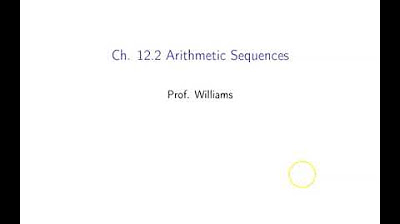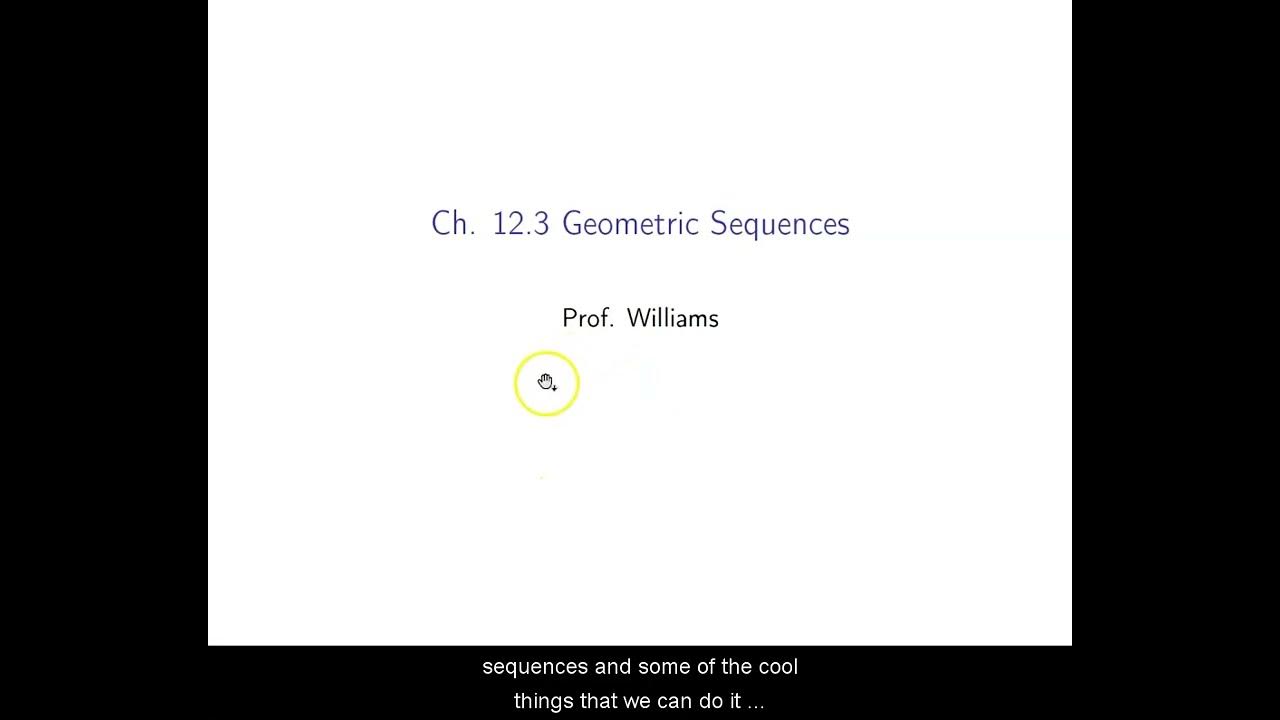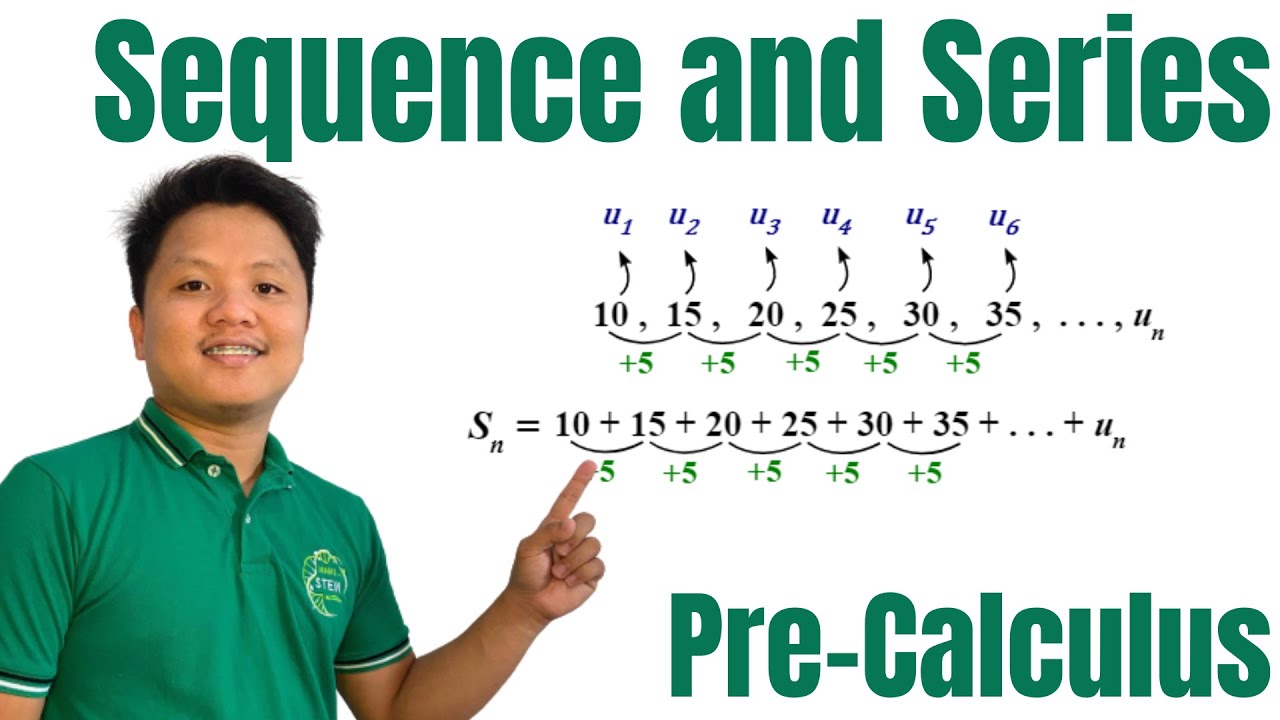Partial sums: term value from partial sum | Series | AP Calculus BC | Khan Academy
TLDRThe instructor explains how to find the seventh term in a series where the nth partial sum is given. The strategy involves calculating the sum of the first seven terms and subtracting the sum of the first six terms. Using the given formula, the sums are computed, and after some arithmetic, the seventh term is found to be 27/28. The explanation is detailed, aiming to make the process intuitive and easy to understand.
Takeaways
- 📚 The nth partial sum of a series is given by a formula involving n squared plus one, over n plus one.
- 🔍 The task is to determine the seventh term (a sub seven) of the series.
- 🤔 To find a specific term, consider the relationship between the sum of terms and the individual terms.
- 📝 Summing all terms up to a sub seven is denoted as s sub seven.
- ➖ To isolate a sub seven, subtract the sum of the first six terms (s sub six) from s sub seven.
- 🧩 The formula for the sum of the first n terms can be used to calculate both s sub seven and s sub six.
- 🔢 Calculate s sub seven by substituting n with seven in the formula, resulting in (7 squared plus one) over (7 plus one).
- 🔢 Calculate s sub six by substituting n with six in the formula, resulting in (6 squared plus one) over (6 plus one).
- 📉 Find a common denominator for the fractions representing s sub seven and s sub six, which is 56.
- 📈 Convert the fractions to have the common denominator and perform the subtraction: 350/56 minus 296/56.
- 🎯 The result of the subtraction is 54/56, which simplifies to 27/28, identifying a sub seven as 27/28.
Q & A
What is the formula given for the nth partial sum of the series?
-The formula for the nth partial sum of the series is n squared plus one, divided by n plus one.
What is the task the instructor is asking the students to do?
-The instructor is asking the students to figure out the actual seventh term of the series.
What is the strategy to find the seventh term of the series?
-The strategy is to subtract the sum of the first six terms (s sub six) from the sum of the first seven terms (s sub seven).
How does the instructor suggest to find the sum of the first seven terms?
-The instructor suggests using the given formula by replacing n with seven to find the sum of the first seven terms.
What is the expression for the sum of the first seven terms using the formula?
-The expression for the sum of the first seven terms is 7 squared plus one, over 7 plus one, which simplifies to 50 over 8.
How is the sum of the first six terms calculated?
-The sum of the first six terms is calculated using the formula by replacing n with six, which results in 37 over 7.
Why is it necessary to find a common denominator for the two fractions?
-A common denominator is necessary to subtract the two fractions representing the sums of the first six and seven terms.
What is the common denominator found between eight and seven?
-The common denominator found between eight and seven is 56.
How is the numerator of the first fraction adjusted to match the common denominator?
-The numerator is adjusted by multiplying the original numerator (50) by seven, resulting in 350.
What is the result of multiplying the second fraction's denominator by eight to get the common denominator?
-The result of multiplying the second fraction's denominator by eight is 296, which is then used as the new numerator after the multiplication.
What is the simplified form of the seventh term after performing the subtraction?
-The simplified form of the seventh term after performing the subtraction is 27/28.
Outlines
📚 Calculating the Seventh Term of a Series
The instructor introduces a mathematical series where the nth partial sum is given by a formula involving n squared plus one, divided by n plus one. The task is to find the seventh term of the series. The strategy involves understanding the relationship between the sum of the first seven terms (s sub seven) and the sum of the first six terms (s sub six). By subtracting s sub six from s sub seven, the seventh term (a sub seven) can be determined. The instructor guides through the arithmetic process, including finding a common denominator and simplifying the resulting fraction, to arrive at the seventh term as 27/28.
Mindmap
Keywords
💡Partial Sum
💡Series
💡nth Term
💡Sum of Terms
💡Formula
💡Arithmetic
💡Common Denominator
💡Simplification
💡Strategy
💡Subtraction
💡Reduction
Highlights
The nth partial sum of the series is given by a formula: n^2 + 1 / (n + 1).
The task is to find the actual seventh term (a_sub_seven) of the series.
A strategy is introduced to find a_sub_seven by relating it to different sums.
The sum of the first seven terms (S_sub_seven) can be calculated using the formula.
a_sub_seven is the difference between S_sub_seven and S_sub_six.
The formula for S_sub_seven is 7^2 + 1 / (7 + 1).
The formula for S_sub_six is 6^2 + 1 / (6 + 1).
Arithmetic is performed to find the difference between S_sub_seven and S_sub_six.
Finding a common denominator of 56 to simplify the calculation.
The numerator of S_sub_seven is multiplied by 7 to get 350.
The numerator of S_sub_six is multiplied by 8 to get 296.
The difference between the two numerators is 54.
The simplified form of a_sub_seven is 54/56.
Further simplification of the fraction results in 27/28.
The final answer for a_sub_seven is 27/28.
The method demonstrates a clear step-by-step process to find the seventh term.
The video encourages viewers to pause and attempt the problem before the solution is provided.
The instructor uses a visual approach to make the concept more intuitive.
The importance of finding a common denominator in fraction subtraction is emphasized.
Transcripts
Browse More Related Video

Partial sums: formula for nth term from partial sum | Series | AP Calculus BC | Khan Academy

Ch. 12.2 Arithmetic Sequences

ILLUSTRATING SEQUENCES AND SERIES || PRECALCULUS

Partial sums intro | Series | AP Calculus BC | Khan Academy

Ch. 12.3 Geometric Sequences

Sequence and Series | Terms of Sequence and Associated Series | Pre-Calculus
5.0 / 5 (0 votes)
Thanks for rating: